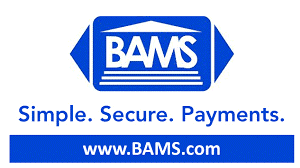Click here to get this post in PDF
The payment gateway is a mechanism that helps to ensure that payments are facilitated smoothly. It is the technology that makes it possible for businesses and consumers to facilitate online payments. Online merchants need not be experts in the payment gateway technology; however, it is understood that they know the fundamentals of the way that the online payment system works and transfers money to their bank accounts from the customers.
In this post, we describe the features of the payment gateway, its working mechanism, its benefits for online merchants, and what to consider when choosing the ideal payment gateway system for businesses.
Major online payment players
Before we go deep into the meaning of the payment gateway system, it is important that we identify the important parties for online payments. Every time that the customer hits your “Pay” button on a website, there are several important parties that take part in the process of payment:
The merchant is you which can be an online business that operates out of any business segment (such as eCommerce, Forex, retail, travel, gaming, etc), which offers services or products to customers.
The customer: This is the cardholder. It is the customer of the service that is looking to access services or products that are being sold by the merchant. The customer is the person that initiates the business transaction for the money to be paid.
The payment issuing bank: This is the bank of the customer. The issuing bank is the entity that issues the debit or credit card of the cardholder which is done in favour of the card service providers including MasterCard and Visa.
The acquirer: This is the acquiring bank that gets to receive the payment. The acquirer in this case is the bank or financial institution which houses the bank account of the merchant. The acquiring bank usually passes transactions from the merchant to receive the payment from the issuing bank.
What does payment processor/gateway mean?
The payment gateway is the technical solution that helps to capture and transfer the data for payment from the bank’s customer back to the acquirer and will then transfer a payment decline or acceptance to the paying party, i.e., the customer.
The technology is used to conceal sensitive information from the credit card, which ensures that there is a secure transfer of information from the bank customer to the receiving bank, through the merchant.
This means that the payment gateway tends to act as an intermediary between the merchant and the customer. It ensures that there is a prompt and secure transaction process. This online payment gateway can easily simplify the manner that merchants configure the needed software.
With them acting as an intermediary in the process of payment, the gateway can manage the sensitive card information from the customer as the transaction flows from the receiving bank and the merchant.
Why is the payment gateway needed?
People might say, why is the payment gateway needed, if they get to act as only an intermediary? Before this question is answered, we will double down and emphasise that online payment is usually executed as a card-not-present payment process.
What if the payment gateway was taken off the process of online payment? This means that fraudsters will be able to easily have an access to the card information that was just inputted by you. This will then open your business to potential chargebacks, frauds, and monetary theft.
If such information were left out there, it will be illegally exploited by fraudsters and online criminals looking to steal people’s credit card details.
The payment gateway acts as the party responsible for the safekeeping of the payment data from the customer.
For merchants online, the payment gateway helps to send the information sent by you, the online merchant, to the receiving bank, and the sending bank with the use of data encryption which is used to protect the sensitive card details from potential threats.
Besides fraud management, the payment gateway is also used to protect the merchants from getting paid through expired cards. The gateway payment also shields the merchant from other potential problems like closed accounts, going over the credit limits, and insufficient funds.
Understanding the manner that the payment gateway system work
Haven fully understood the reason merchants should use a system for gateway payments, we will look forward and analyse the function of the payment gateway in the whole payment process.
1). The paying customer selects the service or product that they are looking to buy and then checks out to pay for their chosen product. Many payment gateways provide various alternatives for you to pay with. For instance, the payment gateway from emerchantpay gives you the options below. The payment method is usually tailored according to the needs of your business:
The hosted page for payment
The hosted page for payment is a new payment system page that the customers are rerouted to when they are trying to checkout. This payment gateway safely obtains the transaction details before this gets moved to the receiving party. There is the hosted page for payment that is used to reduce the PCI burden with online merchants when the cardholder information is not collected or stored on the server.
Server-to-server configuration
The server-to-server configuration is also referred to as the direct integration. It makes it possible for two servers to be able to communicate: the server of the merchant and the server of the payment gateway system. By asking for the card information on the page for payment, you could initiate a direct transaction.
Customers can finalise the card payment process without necessarily being redirected to the payment page. This results in a quicker checkout, a more refined user experience with more control in terms of the appearance and performance of the online payment page through the perspective of the merchant. The server-to-server configuration is necessary when you receive and/or save the payment information before they are sent for processing in the online payment gateway similar to next day funding.
1). Online client-side encryption
The client-side encryption which is also referred to as source encryption is used to encrypt sensitive data from the device from the client-side before this gets to the server of the merchant.
This helps the merchant to simplify the requirements as it relates to your online PCI compliance. Summarily, this makes it possible for you to receive payments through your website as you encrypt the data of the card in your web browser, with the use of the encryption library of the payment gateway.
2). Input information
The paying customers input the information of their debit or credit card on the online payment page. Some of the information that he has to input includes things such as the name of the cardholder, the expiration date of the card, and the Card Verification Value – CVV. This data is passed securely routed through your card payment processing gateway, which is based on your card payment integration technology (the hosted card payment page, the server-to-server configuration, or the online client-side encryption).
3). Fraud checks
The card payment gateway helps to encrypt or tokenise the details of the card. It then goes ahead to perform various fraud checks before the card information is sent to the receiving bank.
4). Securely send the data
The receiving bank is used to securely send the data to the different card payment vendors (Mastercard, Visa). There is one more anti-fraud checking process by the card vendors before the data for payment is sent to the payment issuing bank.
5). Authorized transaction
The payment issuing bank right after they might have screened the transaction for fraud, authorise this card transaction. There is a declined or approved message for payment which is sent to the card vendors and then to the receiving bank.
6). Approvals
The receiving bank then transfers the message for decline or approval straight back to the online payment gateway that then sends back the message to the receiving merchant. As soon as the payment gets approved, the receiving bank obtains the money paid from the payment issuing bank and deposits the fund in the account of the merchant.
7). Deposit the money into the account of the merchant
It then deposits the money into the account of the merchant. This process is called settlement: and in the case that there is a settlement, this will depend on the agreement between the payment gateway system and the merchant.
8). Confirmation
According to the message, the merchant could either be able to display the confirmation page for payment or should request a different method of payment from the customer.
GMT Pay Launches as First Payment Gateway for Everyone to Use Web3 Earnings for Everyday Payments
How can Online Payment Gateways Improve Checkout Conversion Rates?
Payment Gateway Options for Your E-commerce Site
Are you looking for a payment gateway then pick BAMs for the best possible rates.
Founded in 2006, BAMS is a premier payment processing solution serving clients across the United States. BAMS was founded on the premise that delivering on every level of commitment is the cornerstone of a successful business. At BAMS, we always look to exceed expectations, working from the motto “under-promise, over-deliver.”


